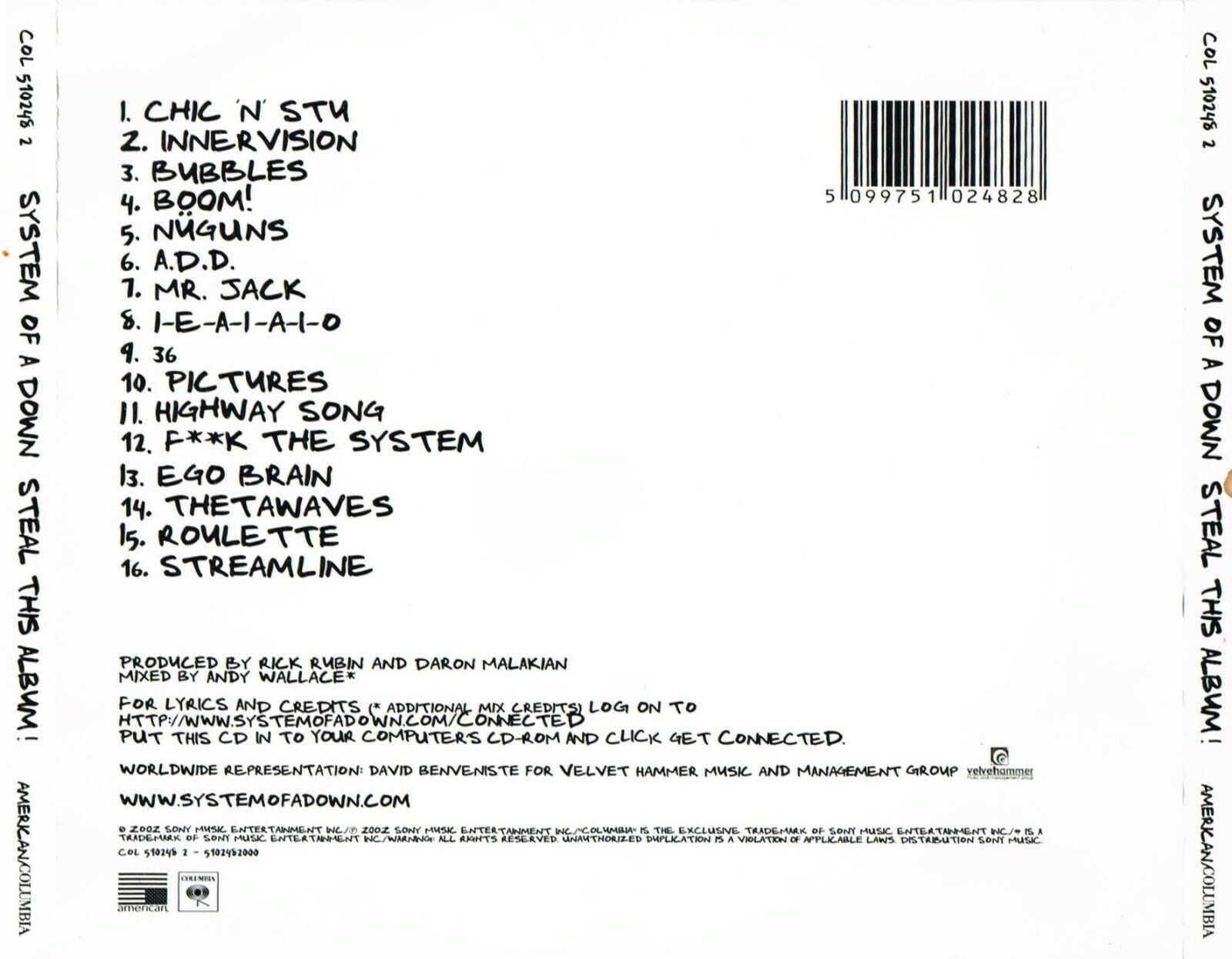

In its first week, Toxicity sold 220,000 copies.

Dolmayan remembers thinking, “What the fuck?” as he saw people run down Hollywood Boulevard with his drums: “My manager is like, ‘Something big is coming.’” Helicopters circled the scene, zooming in on police with riot gear and fans destroying the stage.

A riot ensued.Īs the band escaped to hotel rooms, they watched the events unfold across CNN. Fire marshals shut down the concert before the band could play a single note.
#System of a down system of a down album cover free#
Anticipation boiled over during a free show on September 3, 2001, in a parking lot on Schrader Boulevard. On the outside, fans were just as impatient. Some arguments were over a single word in a lyric. But I felt like I had to take the bull by the horns.”

I put a lot of pressure on myself, which maybe made me a little bit hard to deal with. “The sophomore record is something I think people pay attention to. “I didn’t want to make the first album part two,” Malakian says. As much as the guitarist was aware of the buzz, he was hellbent on avoiding the second album slump. In the same breath, he compared songs like “ATWA” and “Version 7.0” (later renamed “Toxicity”) to Radiohead and Pink Floyd. If fans were worried about the new direction, guitarist Daron Malakian crushed those concerns when he told MTV that the band remained heavy. One song was reportedly called “K.I.T.T.,” an allusion to the Knight Rider car with satirical lyrics about the show’s star, David Hasselhoff. Anticipation grew as rumors about new material leaked to the press. In spring 2001, the band went to Cello Studios in Hollywood and recorded nearly all of them. To prepare for Toxicity, the band wrote more than 40 songs. “We had gone as far as we could with the first.” He was disappointed, but “it was time to make the second,” he says. Even as the album cycle wound down, System of a Down was on the road through July 2000 on the Summer Sanitarium Tour with Metallica and Korn.Īfter that string of dates, drummer John Dolmayan remembers having to turn down Iron Maiden. Tankian credits nonstop touring for the band’s rapidly growing following. Even without a hit, the self-titled album went gold by February 2000. A follow-up single, “Spiders,” featured on the Scream 3 soundtrack, reached no. “Sugar” wasn’t exactly a hit, peaking at no. Take the band’s first single, “Sugar,” which mixes jazz-style drums and Cookie Monster growls about “Kombucha mushroom people” that combusts into frontman Serj Tankian manically yelling, “How do I feel? What do I say? In the end, it all goes away.” Though Rubin signed the band to his label, American Recordings, it’s hard to fault him for his initial reaction. They were unlike any hard rock or metal band I had seen previously.” “They made me laugh,” Rubin says, mentioning the band’s mix of Armenian folk dancing and heavy guitar riffs. The first time famed producer Rick Rubin saw the band perform in front of a sold-out crowd at the Viper Room in 1997, he couldn’t contain his excitement. Nu metal’s popularity was near its peak, and while System of a Down was tossed into that category, the band was a different beast: They painted their faces, were influenced by Slayer, and proudly sang about their Armenian heritage. Prime slots on Ozzfest ‘98 and ‘99 alongside metal gods like Black Sabbath, Tool, and Deftones didn’t hurt. System of a Down had grown from local heroes selling out shows on the Sunset Strip to the most-buzzed-about band across the country. In fall 2000, the heavy rockers headed home-a rehearsal space in North Hollywood called The Alley-to work on what would become their masterpiece, Toxicity. After nearly three years of touring behind their self-titled debut, System of a Down was ready to give the mainstream a wake-up call.


 0 kommentar(er)
0 kommentar(er)
